Hey y’all! I’m back for this week’s blog. A loooooot has happened in the past week. Read on to find out what shenanigans we got ourselves into!
Bidding Farewell to Luna
Team Lion continued our project for the Houston Zoo: a feeding device that allows Luna, one of the zoo’s red river hogs, to increase her feeding time while also engaging in greater physical activity. On Friday, we used Pugh matrices to narrow down our many brainstormed solutions into one final design. Our medium fidelity prototype is shown below.
Our design consists of a small ball and a larger ball that surrounds the smaller ball. Each ball has holes to allow the Luna’s food to leave the device. The zookeeper would place the food through a PVC pipe at the top of the ball and the food would sit initially in the smaller ball. Then, the zookeeper would place the device in Luna’s enclosure. As Luna moves and pushes the ball around, food would first travel out of the smaller ball and into the bigger ball. Subsequently, the food would then travel out of the bigger ball and onto the ground, where Luna can eat it.
One of the successes of our design was that it greatly increased the feeding time. Currently, Luna finishes a meal in about 10 minutes, and the zookeepers would like that number to be at least doubled, maybe even tripled. After a few testing iterations, we found that it would take about 30 minutes to get all of the food out of the ball. Adding in the time it takes Luna to eat the food increases the total feeding time even more. Another success is that the estimated cost of our device is around $50, which is much lower than our limit of $100.
However, we had a few limitations with our device. Firstly, because we only had time to make a medium fidelity prototype, our current prototype is made with fairly weak materials such as cardboard and duct tape. Ideally our final design would be made out of a durable plastic. Also, as a consequence of the materials we used, we could not test the cleanability or safety of the device, as those would require us to have a prototype that is made of the material we would use in our final design (in this case, plastic).
On Tuesday, each team gave a final presentation on their prototypes, and thus signaled our goodbye to Luna and the end of Boot Camp! It was stressful going through what was effectively the entire engineering design process in just one week, but ultimately it was a good experience and made me eager to get started with our summer-long project, which I’ll explain later.
Getting Our Groove On
On Friday night, Magdah, the international students, and I rode the Metro downtown and walked to the Houston Downtown Aquarium. Every Friday night in the summer, the Texas Salsa Congress holds a “Latin Beats” event at the aquarium where there is a big salsa dancing lesson and then the floor opens up for everyone to dance their hearts out to different types of Latino music. One of my friends from Puerto Rico, Angelica, taught me the basic steps to some of the dances, and although I’m not the most gifted in that regard, I like to think I eventually got the hang of it. Also, the international students had a blast. They joined in the salsa lesson and eventually started doing some of their local dances. Their energy was infectious throughout the entire dance floor.
We also got the chance to ride the Ferris wheel at the aquarium. At the top, we got a great view of Downtown Houston, as seen below.
On Saturday, we walked to the Museum of Natural Science. Probably my favorite exhibit there is the mineral hall, where you can see minerals of all different shapes and colors. It amazes me how all of those minerals are made through natural processes. One of the more interesting things is that there are security guards pretty much every 10 feet throughout the exhibit to prevent theft. Sometimes I felt as if it was illegal for me to even look at all of the valuable gems in there.
From the museum, we got on the metro and rode back downtown to eat dinner. We found a pizza place called Roma’s Pizza, right off the metro stop. I ordered a 15″ pie for myself with cheese, pepperoni, sausage, ham, bell pepper, olives, and mushrooms. As it should be, I gave my pizza a very generous amount of parmesan cheese and crushed pepper. Go big or go home, right?
Ringing the Decibels
This week, after Boot Camp, we all were assigned the projects we would be working on for the rest of the summer. I, along with Audrey, Clement, and Wilson, am part of Team Ring the Decibels, and we are tasked with creating a system for use in the OEDK (and maybe other makerspaces in the future) that alerts people when the noise reaches an unsafe decibel level and advises them to use ear protection. This was an ENGI 120 project from Fall 2018, so a team started this project and our goal is to have the device finished and implemented in the OEDK by the end of the summer.
Currently, the device uses a small sound level meter that detects sound, converts it into a voltage reading, and then through a series of code, converts the voltage reading into a decibel number that shows up on an LCD display on the front of the device. If the decibel level is greater than 85 dB, LED lights on the side of the device will light up orange. If the decibel level is greater than 100 dB, the lights will flash red.
Some of the improvements we’ll have to make for the project include:
- Making the decibel reading more accurate and stable
- Making the device battery powered
- Improving the LED system so that it is more noticeable by users
- Finding the most efficient way to connect all of the electrical components so that we save space and so it is all packed neatly inside the device
- 3D printing different casings
- Possibly creating our own PCB (printed circuit board) instead of using a regular breadboard
This project will require a lot of work with microcontrollers, electrical components, and writing/fixing code; although these are things I have very little experience with, I’m willing to learn along the way. I’m looking forward to working on this project for the rest of the summer!


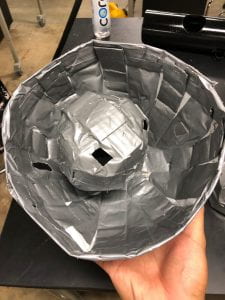
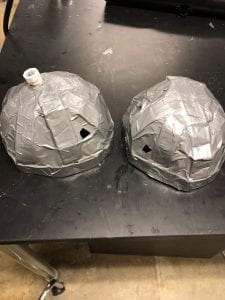
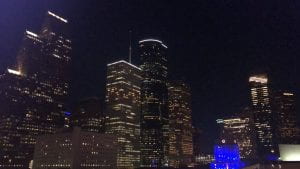
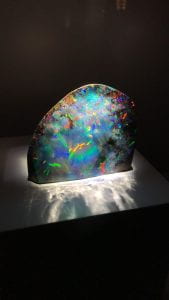
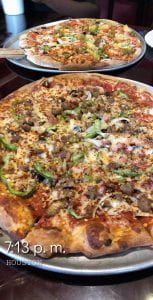
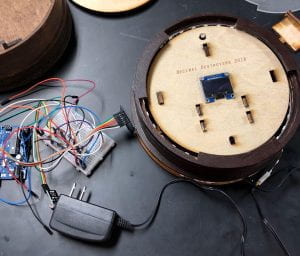
This is such an interesting, well-written blog! I am glad you are having so many positive experiences both in and out of ODEK.